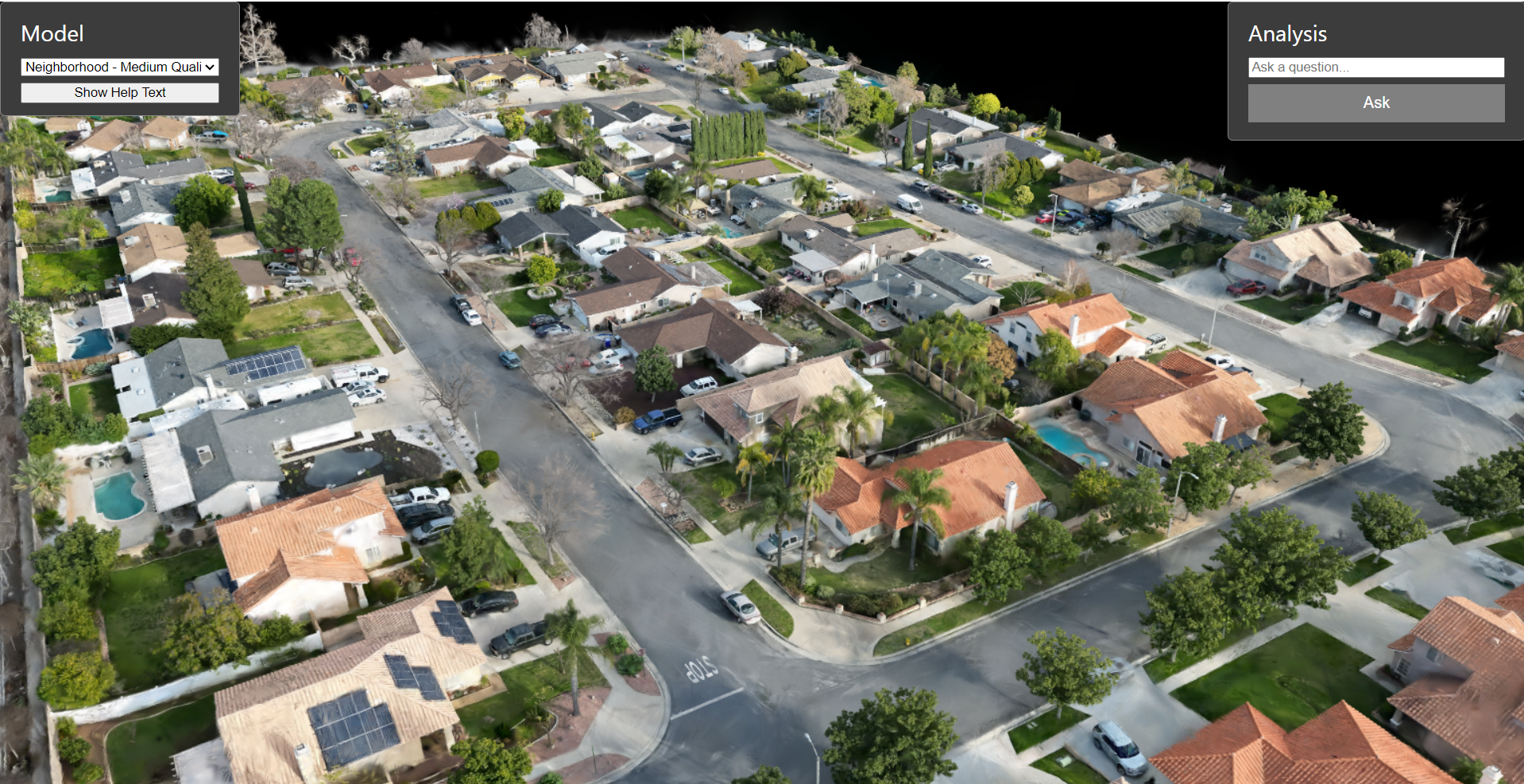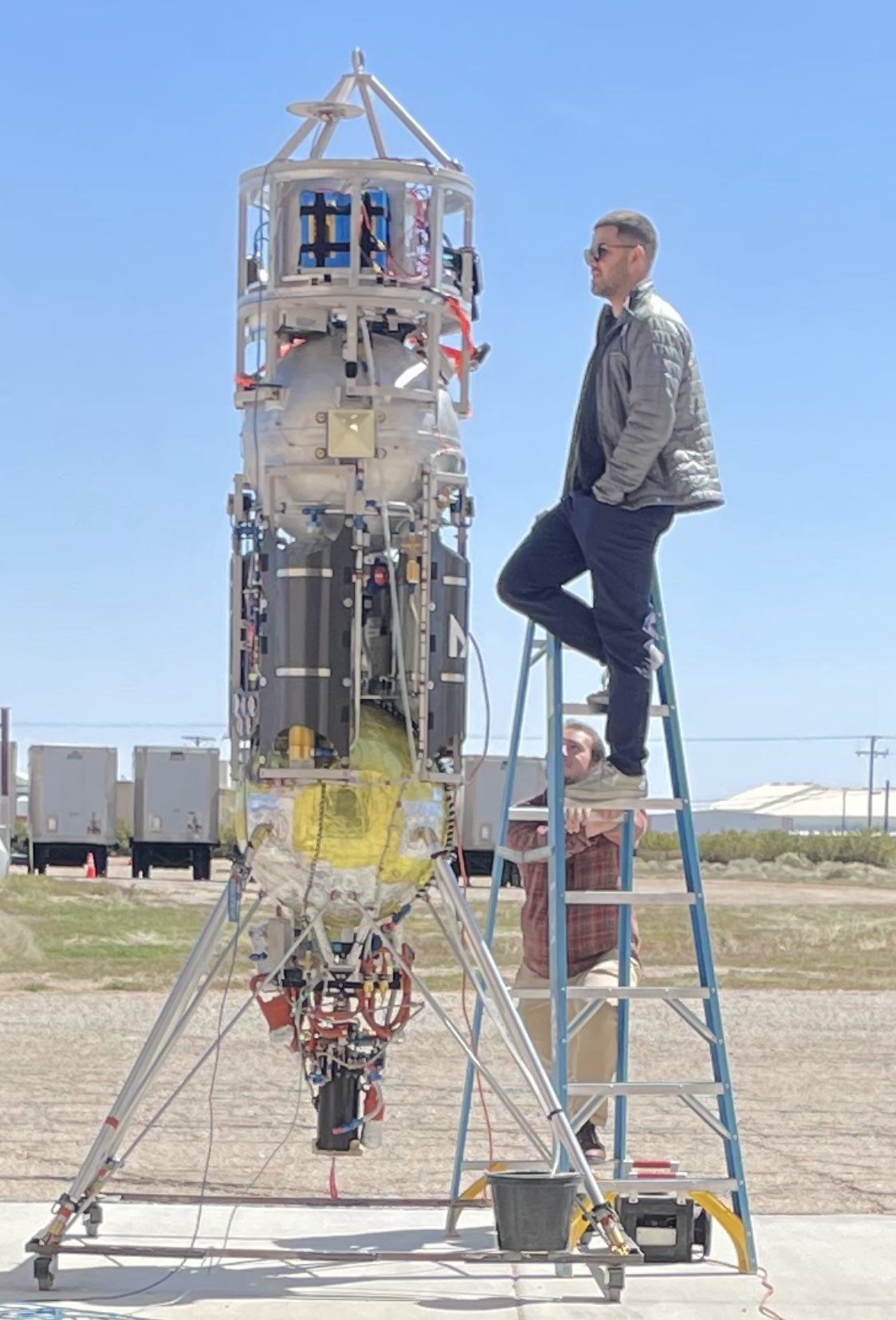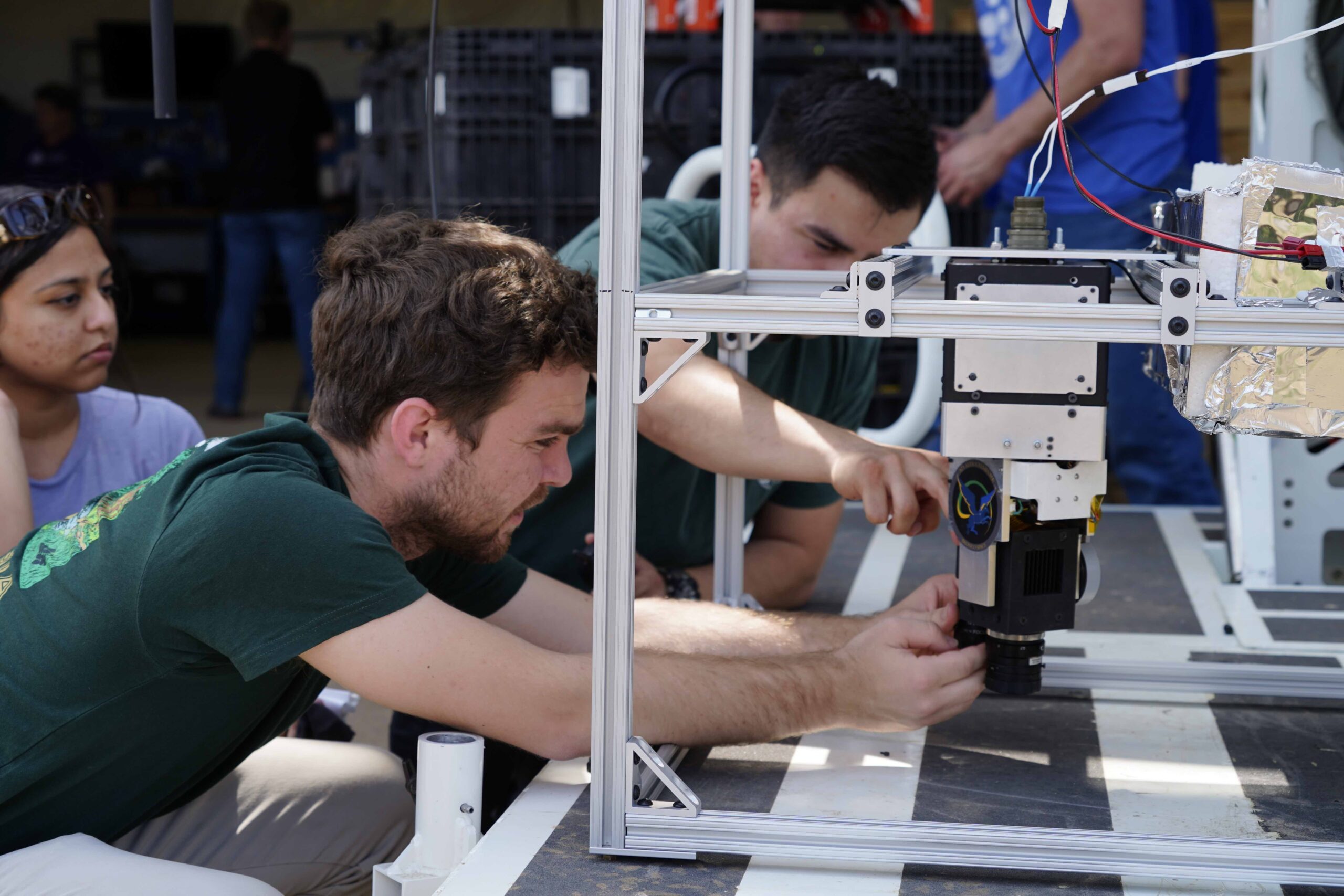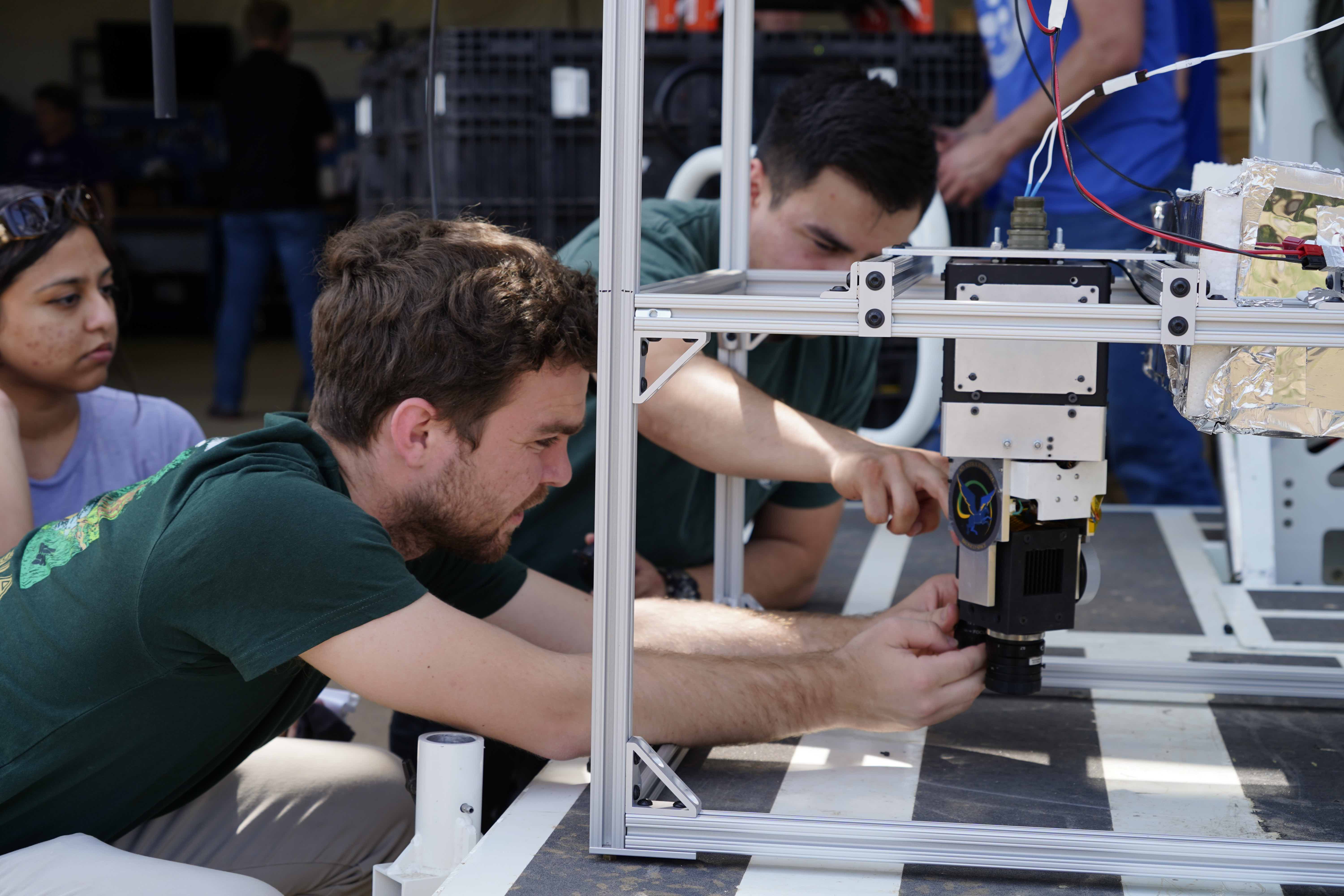4 min read
Preparations for Next Moonwalk Simulations Underway (and Underwater)  The Bronco Space team assembles its Bronco Ember technology, which uses a short-wave infrared camera with AI to improve early wildfire detection.Credit: Bronco Space NASA’s public competitions can catalyze big changes – not just for the agency but also for participants. Bronco Space, the CubeSat laboratory at California State Polytechnic University in Pomona, California, matured more than just space technology as a result of winning funds from NASA’s TechLeap Prize competition. It grew from its roots in a broom closet to a newly built lab on campus, expanding its capacity to mature space technologies long into the future.
The Bronco Space team assembles its Bronco Ember technology, which uses a short-wave infrared camera with AI to improve early wildfire detection.Credit: Bronco Space NASA’s public competitions can catalyze big changes – not just for the agency but also for participants. Bronco Space, the CubeSat laboratory at California State Polytechnic University in Pomona, California, matured more than just space technology as a result of winning funds from NASA’s TechLeap Prize competition. It grew from its roots in a broom closet to a newly built lab on campus, expanding its capacity to mature space technologies long into the future.
The TechLeap Prize seeks to rapidly identify and develop space technologies through a series of challenges that each address a specific technology need for NASA and the nation. In addition to a cash prize, winners receive access to a suborbital or orbital flight opportunity on a commercial flight platform. Bronco Space won $500,000 in the inaugural TechLeap Prize, Autonomous Observation Challenge, launched in 2021. The challenge sought small spacecraft technologies that could autonomously detect, locate, track, and collect data on transient events on Earth and beyond. The team, made up of both undergraduate and graduate students, developed and launched a wildfire detection system called Bronco Ember, which used a short-wave infrared camera with AI (artificial intelligence) to improve early wildfire detection.
Zachary Gaines was an undergraduate student when he participated in the first challenge through TechLeap with Bronco Space. He has since graduated and now supervises the lab at Cal Poly Pomona. Gaines notes how the prize gave the team flexibility to invest in their lab and expand the university’s technology development and maturation capabilities.
“Because TechLeap gave us prize money rather than a grant, we had the freedom to invest those funds,” said Gaines. “If we want to make a real-world impact, which we always want to do, we needed a real lab with equipment. Thanks to TechLeap, we now have space in an innovation village right outside of campus.”
In 2022, Gaines was also involved in Bronco Space’s second time participating in TechLeap as part of the first Nighttime Precision Landing Challenge. The competition sought sensing systems to detect surface hazards from at least 250 meters high and process the data in real-time to generate a terrain map suitable for a spacecraft to land safely in the dark. As one of three winners eligible to receive up to $650,000 each, Bronco Space developed a system using a light projector to create an initial geometry map for landing. The system then uses LIDAR (light detection and ranging) along with advances in computer vision, machine learning, robotics, and computing to generate a map that reconstructs lunar terrain.
 A demo of the 3D digital “twin” app created by PRISM Intelligence for NASA’s Entrepreneurs Challenge.Credit: Bronco Space From the experience with TechLeap, Gaines and other team members formed the small business Pegasus Intelligence and Space, now PRISM Intelligence, and participated in another challenge – NASA’s Entrepreneurs Challenge. This competition seeks the development and commercialization of lunar payloads and climate science through an entrepreneurial and venture lens to advance the Agency’s science exploration goals. The company’s technology, also called PRISM, is a 3D digital map of the world that uses AI to make the “twin” world searchable. The challenge encouraged Gaines and the PRISM team to bridge the gap between available data and consumer end-users. PRISM was a Round 2 winner of the challenge, receiving a share of the $1 million prize as well as exposure to external funders and investors.
A demo of the 3D digital “twin” app created by PRISM Intelligence for NASA’s Entrepreneurs Challenge.Credit: Bronco Space From the experience with TechLeap, Gaines and other team members formed the small business Pegasus Intelligence and Space, now PRISM Intelligence, and participated in another challenge – NASA’s Entrepreneurs Challenge. This competition seeks the development and commercialization of lunar payloads and climate science through an entrepreneurial and venture lens to advance the Agency’s science exploration goals. The company’s technology, also called PRISM, is a 3D digital map of the world that uses AI to make the “twin” world searchable. The challenge encouraged Gaines and the PRISM team to bridge the gap between available data and consumer end-users. PRISM was a Round 2 winner of the challenge, receiving a share of the $1 million prize as well as exposure to external funders and investors.
Gaines traces the success of PRISM back to his first TechLeap experience: “The company wouldn’t have happened if we hadn’t done TechLeap. It helped me understand how to develop technologies for industry.”
The company and the university continue to secure NASA support. In December 2023, Cal Poly Pomona was selected to receive a two-year funded cooperative agreement through NASA’s University SmallSat Technology Partnership.
“When people invest in your ideas and continue to support them, they help you get smarter and increase your understanding of people’s needs,” said Gaines. “Building technologies with the goal of a real-world impact is really motivating.”



